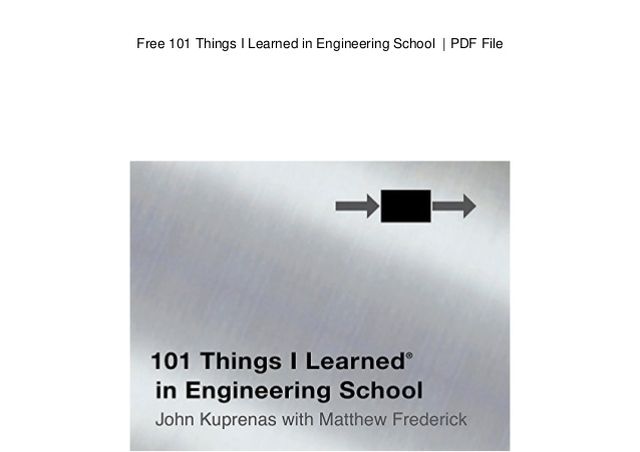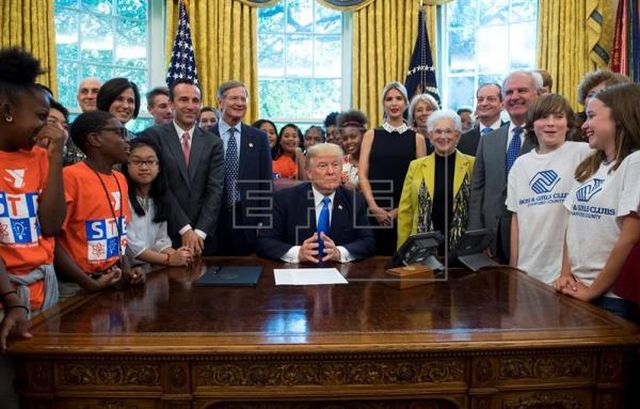
Engineering and human life – a curious resemblance (Book Review)
Title: 101 Things I Learned in Engineering School; Author: John Kuprenas (with Matthew Frederick); Publisher: Three Rivers Press; Pages: 216; Price: Rs 499
Nature is termed the best teacher. This is not only because our existence depends on striking concord, or at least a compromise, with it, but because in studying it, we find the fundamental inter-connectedness between us and the world we flourish in. And out of all academic disciplines, it is engineering that shows us how.
Prima facie, nothing could seem more distanced from the human condition than engineering, which is concerned with how to devise, design, build, run and maintain structures, machines, materials, devices, processes and so on by skillfully applying science and mathematics.
And then it needs years of intense study involving mastery over abstract concepts, difficult mathematical calculations and specialised knowledge of at least two basic sciences (physics and chemistry) and maths. But if we leave our preconceptions of engineering as highly technical subject, we will be surprised with the points of resemblance.
Force (or influence in human terms), pressure, stress, support, problem-solving, creative thinking, and so on are as important to human life as engineering, as experienced civil engineer and instructor John Kuprenas shows us in this lucid introduction to the principles of engineering and the mindset its practitioners need.
“Engineers view their profession as fascinating, creative, and full of interesting challenges. Those outside it often regard it as repetitive, mechanical and frustrating,” he observes, but notes that common to both views is that it is indeed complex.
Kuprenas, who lectures on the subject at the University of South California and California State University, Long Beach, and is Senior Vice President of the STV Group’s Construction Management Division, however recalls from his own experience that the intense grounding in mathematics, physics and chemistry in the initial years of the engineering course does not provide much “real-world context”.
It is this context he seeks to present in this engaging and insightful book of a 100-odd facts, principles and examples, which seeks to introduce engineering through its real-wold moorings “by emphasising the common sense behind some of its fundamental concepts, the themes intertwined among its many specialities, and the simple abstract principles that can be derived from real-world circumstances”.
Say, understanding the difference between accuracy and precision, what happens when force acts on an object, why there is always a trade-off, why some get stronger by doing more work, or when perfect reliability may not always be desirable — all these can well be applicable to the human condition too.
Then there are the some more “mysterious scientific” issues such as why buildings want to float and cars want to fly, or why keeping one hand in your pocket while touching an electric appliance may save you from a major shock, why some parts are designed to fail and why soldiers should not march on a bridge — as some non-science readers might remember from their obligatory physics classes.
Interspersed are some examples of the success or failure of various structures, mostly bridges, or products (largely US-centric though) which also provides a more tangible example of how engineering works — or doesn’t. Also offered, along with some splendidly evocative illustrations to all the 101 entries, are some interesting historical nuggets and some random hypotheses.
While Kuprenas mostly focusses on his field of civil engineering — which we learn is the oldest branch — with occasional forays into other branches such as mechanical, chemical or engineering, he lays the discipline’s basic thrust which is that “the heart of engineering isn’t calculation; it’s problem-solving”.
Also that while all engineers calculate, good engineers also communicate — and very cogently and persuasively.
With this, and more examples beyond the ones cited above, he goes on to show that engineering is not only meant to benefit humanity in its basic and other comforts, but closely approximates their own life, in both structure, influence and performance, to make the compelling case that “engineering events are human events”.
While this book may help engineering aspirants to understand what the field entails, and even some engineers might learn a thing or do, it is the curious lay reader it is directed at — and will prove to be a rewarding read in showing how things in our world are intertwined.
(Vikas Datta can be contacted at vikas.d@ians.in )
—IANS

